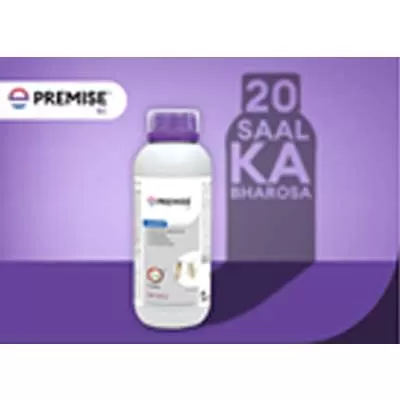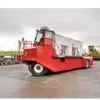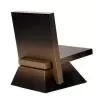Infrastructure development has clearly been given a huge thrust in the Union Budget 2022-23 by the finance minister. The capital outlay has been raised by 35 per cent to ₹7.5 trillion and the fiscal deficit has been contained at 6.9 per cent of GDP. Among the variety of initiatives announced, some that were noteworthy included:
The allocation of ₹1 trillion to assist states in catalysing investments including those for PM Gatishakti in the form of a 50-year interest-free loan is over and above the normal borrowing allowed to states. The utilisation could include PM Gram Sadak Yojana, digitisation, optic fibre network, town planning schemes etc. Data for the last five years (2016-17 to 2020- 21) revealed that more than half (52.3 per cent) of the projects were taken up in five states — Gujarat, Maharashtra, Karnataka, Andhra Pradesh, and Tamil Nadu. This will allow other states to also follow suit and therefore there will be a race towards development.
After a gap of six years, urban planning a.k.a. smart cities mission has been rejuvenated with the FM’s emphasis on nurturing megacities and re-imagining tier 2 and 3 cities. I had emphasised the need for ‘capacity building’ time and again at various platforms in order to stop the haemorrhaging of the building blocks. Having recognised this gap, a committee has been formed to resuscitate this vertical. An outcome report of the Smart Cities Mission could be a good starting point. Strategically, villages in border areas have been covered under the Vibrant Villages Programme which will include roads, housing, village infrastructure, renewable energy, etc. The contracts for laying optic fibre in all villages, including remote areas, will be awarded under the Bharatnet project through PPP in 2022-23 and is targeted to be completed in 2025.
The PM Awas Yojana has been delivering effectively and another 8 million houses are to be completed in both urban and rural areas with an allotment of ₹ 480 billion. Piped water for each household has been delivered to 55 million households and another 38 million will be covered with an allotment of Rs 600 billion.
The $5.9 billion Ken-Betwa Link Project which transfers water from river Ken to Betwa , is aimed at providing irrigation benefits to 9.08 lakh hectare of farmers’ lands, drinking water supply to 6.2 mn people, 103 MW of Hydro, and 27 MW of solar power. Five more draft DPRs of river links have been finalised.
In the transportation and logistics sector, highways for 25,000 km, 100 new cargo terminals to be built in the next 3 years, contracts for implementation of Multimodal Logistics Parks at four locations through PPP mode and manufacturing new generation 400 Vande Bharat trains with improved energy-efficiency have been planned. The road sector has provided a lifeline through its performance of having executed 13,435 km in 2020-21 which is an average of 37 km per day. However, the roads story has slowed down since then. The government has set a target of 12,000 km (for) the current financial year against which 5,118 km was constructed as on November 30, 2021 (barely 21 km per day). The government has lowered the target for the year to 33 km/day from the 40 km/day target set earlier. The original target was to build 14,600 km highways in 2021-22. The PM GatiShakti Master Plan for Expressways is being formulated in 2022-23 to facilitate faster movement of people and goods. The National Highways network will be expanded by 25,000 km in 2022-23 (but this does not mean that this will be the construction target, as moving up from the current pace of 21 km per day to 69 km per day will be an impossible uphill climb) and ₹20,000 crore will be mobilized through innovative ways of financing to complement the public resources. Provision of surety bonds to fill in for bank guarantees is a welcome step in adding to the capacity of existing EPC contractors in taking up more and for encouraging new EPC contractors into the fold.
Within transportation, the Parvatmala scheme aimed at connecting the hilly regions is likely to see 60 km of eight ropeway projects take-off. These would be environment-friendly, encourage the SME sector, and boost tourism.
Several new age businesses have been recognised and provided for as an indication of the government’s focus on the future, and the youth. Encouragement to start-ups and sectors such as clean tech, drones, wearable devices, blended fuel, land record management, battery swapping, AVGC, 5G etc, are laudable intentions.
Initiatives on skilling and education by using portals, television channels, digital university, backed by the completion of the laying of the optic fibre network by 2025 are steps in the right direction.
However, the government needs to also report on schemes that were announced earlier and report on their progress. One such initiative, the Delhi-Mumbai Industrial Corridor was started 13 years ago. I had interviewed Amitabh Kant – then CEO of that initiative - and he had shown us the master plans for seven greenfield cities which were already complete. Yet, in the last several years of budget speeches, we have yet to hear of any update on this monolithic investment. It is one of the world's largest infrastructure projects with an estimated investment of US$90 billion and is planned as a high-tech industrial zone spread across six Indian states. The Smart Cities Mission reported on its deliveries but not on the outcome, and these projects are very low on the sustainability index which means the projects will die when the money runs out.
For the year 2022-23, the 15th Finance Commission has earmarked ₹229.08 billion for municipalities. Of this ₹72.27 billion are earmarked for million-plus cities and ₹156.81 crore is for non-million plus cities. The grant will be divided state-wise and will be devolved to the cities from the states based on their population. Accountability-based funding has got cities worried. Earlier 80 per cent was given as a basic grant and only 20 per cent was linked to reforms. Now with 100 per cent of grants linked to performance, states have to work on a war footing. Today grants have been linked to safe water and energy resilience. This is crucial if India has to meet the aggressive SDG (Sustainable Development Goal) targets it has taken.
The projects planned under various corridors are substantial and can fill the vacuum – which is dragging our growth momentum down - in our project pipelines. The industrial corridor programme is set to create greenfield, smart, industrial cities with sustainable 'plug n play' ICT-enabled utilities, that will facilitate the manufacturing investments into the country by providing quality, reliable, sustainable and resilient infrastructure to industries. The government has approved 11 such corridors consisting of 32 projects to be developed in four phases. Each will have multiple townships and industrial cities and we are yet to see any visibility. The 701 km Samriddhi Expressway from Mumbai to Nagpur is creating 19 new townships and one of these is already underway.
The year 2022-23 will be principally driven by the roads and metro rail execution but will also see irrigation, power, railways and mining with above-normal commercial expressions. Beginning now and until 2024 we are going to witness 16 assembly elections and one general election, and should the states decide to win elections on the development plank, we will certainly have a lot to look forward to.


















